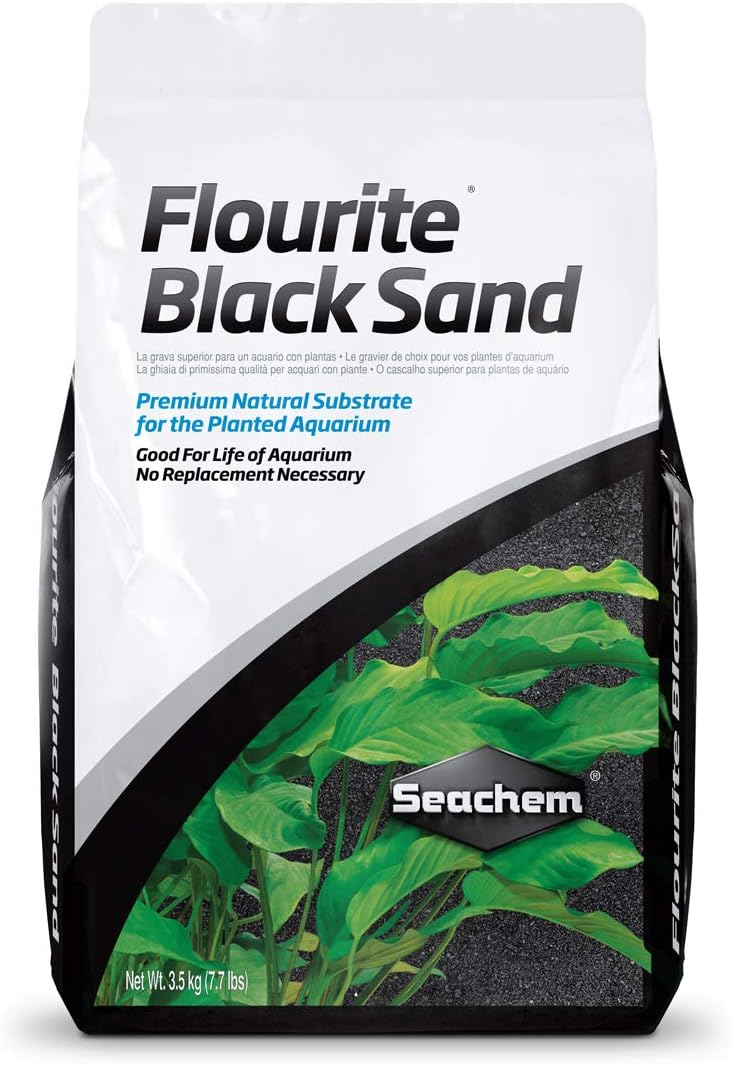
Aquariums are a window to a fascinating underwater world, and plants are an essential part of this vibrant ecosystem. Here are BAP, our expert team of aquarium designers understand that the foundation of a thriving aquatic garden lies in choosing the right substrate. The substrate does more than just anchor plants; it’s a crucial player in nutrient cycling, aesthetic appeal, and the overall health of your aquatic plants.
So, if you’re knew to the world of aquariums and want to ensure you lay the perfect foundation for your aquatic plants, then choose one of the best substrates for aquarium plants below.
Best Substrate for Aquarium Plants – At a Glance

Aqua Soil-Amazonia
- Made with rare Japanese plant-based soil
- Organic components to support varied aquatic plants
- pH and hardness control

Seachem Fluorite Black Sand Substrate
- Premium Natural Sand
- High plant longevity
- Attractive aesthetic

CaribSea Eco-Complete 20-Pound Planted Aquarium
- Nutrient-Rich Composition
- Promotes Healthy Root Growth
Specially Designed for Freshwater Planted Aquariums

Brightwell Aquatics FlorinBase Laterin Substrate VF
- Long Term Nutrient Availability
- Very Fine, High Porosity Granules
- Rich in Natural Minerals
Selecting the best substrate for your aquarium plants involves balancing nutritional content, the texture of the substrate, and its impact on water chemistry. Ideal substrates should provide essential nutrients, maintain appropriate pH levels, and offer a stable ground for roots to flourish. Some top choices include laterite, aqua soil, and sand combined with root tabs for a nutrient boost.
5 Best Substrates for Aquarium Plants – Reviews

Aqua Soil-Amazonia
This substrate is rich in organic acids and nutrients, promoting lush plant growth. Its fine granules are perfect for rooting, and it helps in lowering the pH and hardness of the water, simulating a tropical environment.

Seachem Fluorite Black Sand Substrate
This is not just aesthetically pleasing; it’s also rich in minerals and maintains a neutral pH. The porous structure encourages root growth and is excellent for plants that feed heavily through their roots.

CaribSea Eco-Complete 20-Pound Planted Aquarium
A nutrient-rich substrate that contains live beneficial bacteria, Eco-Complete is excellent for plant growth and requires no rinsing. It provides iron, calcium, magnesium, potassium, and sulfur in a bio-available form.

Brightwell Aquatics FlorinBase Laterin Substrate VF
Mixed with gravel, laterite works wonderfully for planted aquariums. It’s an iron-rich substrate that’s perfect for root-feeding plants. The high iron content encourages vibrant plant growth without affecting the water’s pH significantly.
Things to Consider When Buying Substrate for Aquarium Plants
It can be difficult choosing the right substrate for your aquarium. For that reason, we’ll highlight some of the main considerations below, allowing you to make a more informed decision on your next purchase.
- Nutrient Content: Plants need various nutrients for growth, look for substrates rich in iron, potassium, and other essential nutrients.
- Particle Size: Fine substrates are good for root development but can compact over time, affecting water flow and root growth. Coarser substrates are less compact but may not hold plants as securely.
- pH and Water Hardness Impact: Some substrates can alter the pH and hardness of your water. Choose a substrate that matches the needs of your plants and fish.
- Aesthetic Appeal: The substrate should complement the overall look of your aquarium.
3 FAQs on Substrate for Aquarium Plants
Q: Can I mix different substrates? Yes, you can mix different substrates to achieve the desired balance of nutrients and aesthetics. However, consider the individual properties and how they might interact or settle over time.
Q: How much substrate do I need? Generally, a depth of 2-3 inches is recommended for most aquarium plants. However, the amount may vary based on the type of plants and the size of your aquarium.
Q: Do I need to replace the substrate often? Most substrates last for several years. However, the nutrient-rich ones might get depleted over time and may require supplementation or replacement. Observing plant growth and health is key to determining when to replace your substrate.
Final thoughts
By understanding the needs of your aquarium plants and the properties of different substrates, you can create a thriving aquatic garden. Remember, the best substrate is one that meets the specific requirements of your plants while contributing to the overall health and beauty of your aquarium. As you gain experience, you’ll find that the right substrate can make all the difference in growing lush, vibrant aquatic plants.